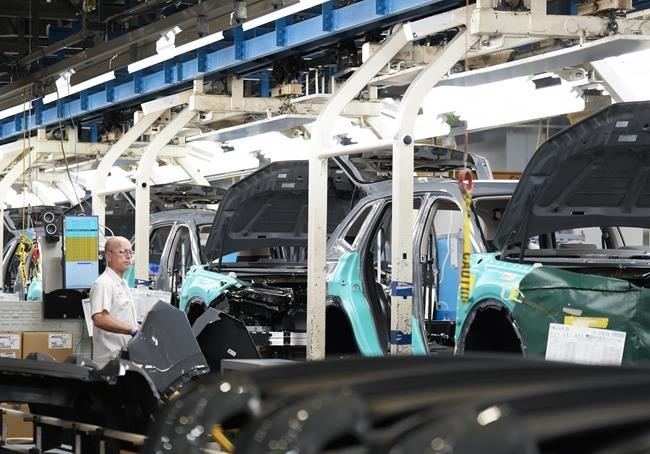A Japanese company is building an approximately $1.6-billion plant in Ontario's Niagara Region that will make a key electric vehicle battery component as part of Honda's supply chain in the province.
Honda announced recently that it is building an electric vehicle battery plant next to its Alliston, Ont., assembly plant, which it is retooling to produce fully electric vehicles as part of a $15-billion project to create a supply chain in the province for the automaker.
The location for part of that supply chain was announced Tuesday in Port Colborne, Ont., with a facility expected to be up and running by 2027. Asahi Kasei Corp. will build battery separators, which prevent the anode and cathode from coming into contact and causing a short circuit, but still allow the lithium ions to move back and forth.
Another company, POSCO Future M Co., Ltd., is set to build a cathode active material and precursor processing plant, but the location for that facility has not yet been announced.
Koshiro Kudo, the president and representative director of Asahi Kasei, said the company had been looking to build a separator plant abroad for a few years and they first looked at Europe then the United States.
"Frankly speaking, Canada was our third country to investigate opportunities for investment," he said at a press conference Tuesday through a translator.
"As we progressed in our investigation, little by little we have learned that there is a huge enthusiasm coming from the federal government, provincial government and the local municipal government and also we have (found) that there are plenty of great quality human resources available here."
Prime Minister Justin Trudeau said that has been the main reason Canada has been able to attract such investments.
"We have extraordinary natural resources from one end of the country to the other," he said.聽
"We have clean energy, and we take climate action seriously. We have stable democratic institutions and strong communities and all those things are what the international community investors look for when they come, but the No. 1 thing they look for, the No. 1 thing that is our competitive advantage as a country is 91原创 workers themselves."
Innovation, Science and Industry Minister Fran莽ois-Philippe Champagne did not directly answer a question about any guarantees the government received about 91原创 jobs at the plant, but said it is always top of mind.
"I can assure you that, in all our discussions with partners like Asahi Kasei and all the others, we've always made sure that we maximize the number of jobs for 91原创s, not only during the plant and the construction phase, but certainly making sure that all the suppliers will be involved in that," Champagne said.
Union leaders, federal Conservatives and the NDP have been demanding assurances from Trudeau that he will make sure jobs are going to 91原创s as he rolls out successive announcements on electric vehicle and parts plants.
Canada's Building Trades Union has said 91原创s are being sidelined at the NextStar battery plant in Windsor, Ont., which is owned by Stellantis and LG Energy Solution, in favour of temporary foreign workers.
NextStar Energy and the federal government both say foreign workers account for just 72 jobs at the plant, and specialized equipment is being installed that 91原创s will then be taught how to use.
The overall Honda deal includes up to $5 billion in public funds and the separator plant is expected to benefit from the federal Clean Technology Manufacturing investment tax credit and both direct and indirect support from the province.
Ontario Premier Doug Ford said the NextStar plant, a Volkswagen electric vehicle battery plant being built in St. Thomas, Ont., and the Honda facility are anchor investments that are helping to build a larger chain including components like Asahi Kasei.
"Ontario is a world leader in the electric vehicle revolution," he said. "Together with great companies like Asahi Kasei, with all levels of government, Indigenous communities, industry and labour groups, we're building an end-to-end electric vehicle supply chain."
This report by The 91原创 Press was first published May 14, 2024.
Allison Jones, The 91原创 Press



